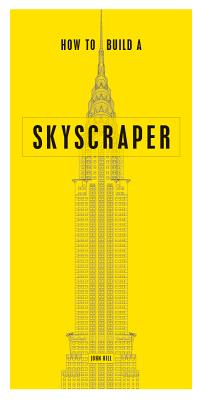
An architectural expert tours 46 of the world's most significant skyscrapers.
This distinctive book is the most comprehensive collection of modern skyscrapers published in the last 20 years. Skyscrapers have been piercing the clouds since the end of the nineteenth century but today's soaring land prices are driving developers to build bigger, better and higher while aiming for as small a footprint as possible.
The lavish spreads feature a large photograph with cross-section drawings plus fact boxes listing location, year of completion, height, stories, primary functions, owner/developer, architect, structural engineer, and construction firm.
Concise text describes historical context; unusual or innovative construction; engineering and structural systems; foundation, facade, and shape; the site history; and building usage; as well as any special features that make the skyscraper unique. For example, The Gherkin at 30 St Mary Axe, London, UK, surprisingly has only one piece of curved glass, despite its rounded shape.
The 46 skyscrapers in How to Build a Skyscraper appear not for their height but for their pioneering technology, sustainability, and other characteristics that set them apart. They are distributed over the world's most developed regions of North America, Europe, Asia, and Australia.
Some of the skyscrapers are:
- New York City's One World Trade Center next to the site of the two World Trade towers and still known by many people as the Freedom Tower.
- The Kingdom Center, with a hole and skybridge at its top and interiors that call to mind the spaceships of Hollywood, the third tallest skyscraper in Saudi Arabia.
- Bangkok's Elephant Tower, properly the Chang Building, honoring Thailand's national animal but noted most for its place on worst building lists.
- The iconic Shanghai Tower, sculpted for efficiency, reduced costs, and environmental benefit by virtue of its curvilinear form and 120-degree twist.
- The Bank of China in Hong Kong, designed by I. M. Pei, controversial because it was built without the benefit of a feng shui consultation.
- The Taipei Tower in Taiwan, the world's most environmentally responsible skyscraper in reduced water use, energy use, and carbon emissions, and also designed to withstand typhoon winds and earthquake tremors.
How to Build a Skyscraper also features height comparison graphics of all featured skyscrapers on the inside front and back covers.







